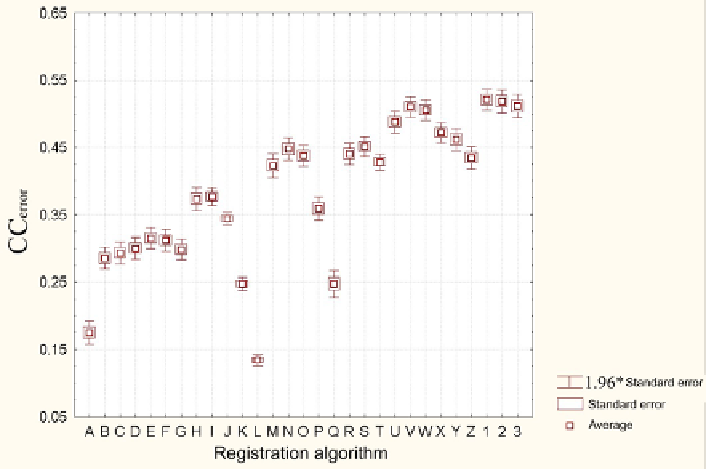Information Technology Reference
In-Depth Information
Fig. 4
The minimally important difference, standard error and the average value of
error
CC
(
A
,
B
)
for all considered algorithms
CC
(0.521) was reached with algorithm (1) that is
FFD with initial grid size 6 x 6, 12 iterations and two adaptive mesh refinement
with additional affine rotation and scaling. According to the MIR test there are no
significant difference between algorithms (1), (2), (3), (v) and (w). All of these al-
gorithms are FFD with mesh refinement and additional rotation and scaling. The
worst result was achieved for affine transform (
The highest value of
error
CC
=
0.220
) and FFD with
error
CC
. That happens because affine transform
cannot model local difference between registered images. Dense mesh at the be-
ginning of the registration process with FFD does not allow to model global dif-
ferences between objects (scaling / translations / rotations). The MIR test of Thi-
rion's algorithm (cases (b) - (g)) did not show important differences between
algorithms with different value of variation parameter
=
0.134
dense mesh (32 x 32)
error
σ
in Gaussian kernel.
CC
was observed between different configurations
of FFD. Neither sparse ((h), (m)) nor dense mesh ((l), (q)) leads to satisfactory
results. The significant improvement of algorithms performance can be achieve
with simultaneous utilizing mesh refinements, affine rotation and scaling. Finally,
algorithm (1) was chosen for the author's solution because the highest value of
The largest variety of
error
CC
was reached with it.
error

Search WWH ::

Custom Search